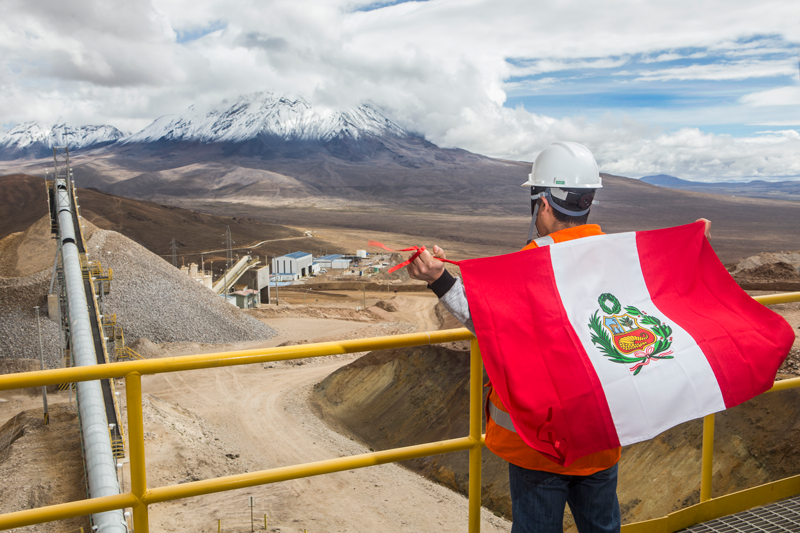
How Minsur Pucamarca Uses Readi to Manage Fatigue Across People Transport, MineOps, and Dangerous Materials

Industry
Mining
Challenge
At Pucamarca, Minsur’s open-pit gold operation located in Peru’s Puno region, workers face long shifts, altitude fatigue, and rotating 7-day/7-night rosters. With over 350 operators on-site, fatigue posed a serious operational and safety concern. They needed a scalable fatigue risk management solution to manage both rotating staff and a high number of contractors.
Results
Minsur Pucamarca now uses Readi as a centralized tool for monitoring fatigue across MineOps, people transport, and dangerous goods handling. Operators wear ReadiWatches to track sleep before each shift. If an operator sleeps less than 6 hours, they are stood down until they’ve met the threshold. After three days of data collection, ReadiScores are used to approve or reject personnel for duty, with scores and fatigue trends reviewed one hour before each shift. ReadiSupervise is used daily by supervisors and HSE leads to monitor and assess fatigue risk in real time.
Key Product
ReadiWatch, ReadiOne, ReadiSupervise, ReadiAnalytics
At Pucamarca, fatigue is no longer just a compliance task—it’s embedded into daily decisions across MineOps, transport, and contractor coordination.

Background
Pucamarca is one of Minsur’s flagship gold operations, situated at over 4,500 meters above sea level near the Peruvian–Bolivian border. The site runs 24/7 with alternating week-long day and night shifts—a demanding schedule that affects sleep cycles and elevates fatigue risk.
Given the complexity of managing fatigue across full-time employees, rotating contractors, and external partners, Minsur needed a system that could deliver objective fatigue insights, fit into existing workflows, and scale across roles and organizations.
Turning Fatigue Data into Action
At Pucamarca, fatigue is now built into the start-of-shift process for all ReadiWatch users. Operators are expected to meet a minimum of 6 hours of sleep prior to their shift. If they fall short, they are stood down until the sleep deficit is recovered—a process unique to the Pucamarca site (other Minsur sites require 7 hours minimum).
After three consecutive days of ReadiWatch use, ReadiScores become the primary decision-making tool. Supervisors review each worker’s ReadiScore one hour before the shift. A score below 70 can result in the operator being reassigned, rested, or monitored more closely, particularly for roles involving mine operations or hazardous materials transport.
Supervisors also check the ReadiScore curve during the shift to monitor fatigue risk dynamically—especially important for 12-hour night shifts, where fatigue patterns tend to spike in the early morning hours.

Coordination Between Stakeholders
Managing fatigue at Pucamarca involves multiple stakeholders:
-
OCA Global supports ReadiWatch syncing and generates daily reports for Minsur’s HSE team, based on contractor data.
-
Contractor supervisors submit shift-level reports (day and night) to OCA.
-
Minsur’s HSE leads use ReadiSupervise to review operator fatigue risk and approve shift readiness.
-
Fatigue-related rejections and countermeasures are shared via a dedicated WhatsApp group, including screenshots and intervention steps. These are manually added to reports by OCA.
To reduce manual effort, Minsur has agreed to begin using Readi’s built-in countermeasure tracking feature, which will streamline data capture and improve reporting consistency across the site.
A Predictive Layer Above Reactive Tools
While Pucamarca still uses in-vehicle fatigue cameras in higher-risk scenarios—such as transporting dangerous materials or during night shifts—Readi provides a predictive layer that enables earlier action. Supervisors can identify workers at elevated risk before they begin high-risk tasks, reducing the need to rely solely on alerts triggered after impairment is detected.
This layered approach aligns with Minsur’s broader goal: to integrate fatigue into safety culture, empower HSE leaders with better tools, and create a more proactive approach to managing operational risk.

